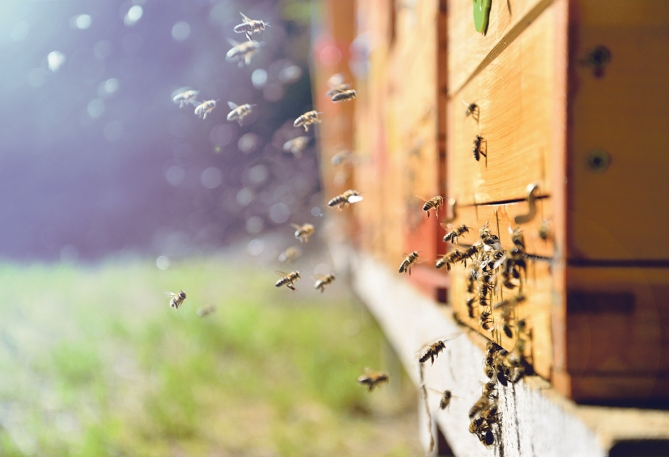Plant & Food Research’s pollination and apicultural team have been working to understand how pollination occurs in avocado orchards in NZ to determine if there are opportunities to increase pollination rates and thus increase fruit volume.
Dr David Pattemore, who leads PFR’s pollination and apicultural team with 19 staff across NZ and Australia, says with the industry booming worldwide boundaries are being pushed beyond their natural range in terms of where avocados are being grown.
“One important thing to realise is fruitset rates in avocados are really low. Natural fruitset rates –in many different studies – are around .3 per cent. So you get three fruit from 1000 flowers.
“This is a low rate of fruitset but not unusual for trees like avocados that come from diverse tropical ecosystems,” says David, who shared his team’s research at 2018’s NZ Avocado International Industry Conference in Tauranga.
“They have mass flowering for the purpose of drawing pollinators in, but there was never any intention on that plant’s behalf of turning all of those flowers in fruit.
“But we also know when we deliberately cross-pollinate flowers we can get fruitset rates of up to five per cent. That’s 50 fruit in 1000 flowers. That’s a world of difference.”
“This tells you even if we could improve pollination from .3 per cent to .6 per cent – that would represent a double in yield.”
In female flowers he’s looked at the relationship between number of pollen grains deposited and the fruitset, timing of female flower being open, and how that relates to other factors in orchards.
For male flowers he’s looked at when pollen is available, how is pollen released, over what period of time, and movement of pollen around an orchard.
Pollen grains
For pollinators, he’s questioned how much pollen an insect deposits on a flower when it lands, how much pollen insects carry, their activity pattern through the course of the day and how they behave in orchards.
“We found if you increase the number of avocado pollen grains deposited on the stigma the probability of fruitset increases. So one pollen grain has lower probability of fruitset than 50 pollen gains.
“So we need to find ways we can increase the amount of pollen being deposited in avocado flowers – that would remove pollination as one natural-limiting factor for production. Then we can focus on other factors that might be influencing fruitset.”
David says there’s no harm in increasing pollinator activity in orchards “because the more insects you have the increased number of visits you get during that period of the female flower being open, which increases the probability those pollen grains are going to be deposited on your flower and build up enough pollen grains for good fruitset”.
And his team has also looked how temperature could affect flowering. “For three years we studied, via cameras taking photos of flowers every five minutes and temperature monitors to measure the temperatures those trees were experiencing, to understand if temperature was correlated to timing of the flowering cycle.
“The data we have suggests as temperature declined, on colder nights, we had female Hass flowers opening later and later in the day.
“Between 11-16 degrees Celsius, the flowers open in the typical way. From 10am the next morning they open – for two-four hours – and close midday to early-afternoon. This an ideal time for honey bee activity.
Flies, moths, bumblebees
“If night temperature is between 4-5 degrees Celsius and 7-8 degrees Celsius – the female Hass flowers don’t open until 2pm or even later, sometimes as late as 6pm.
“And what we found is whatever phase the flower is at – when the sun sets it essentially freezes in that stage overnight, not closing until 9am-10am the next morning.
“This is really important to think about when we’re trying to maximise the amount of pollen grains being moved and deposited on the flowers, so we need to maximise visits by insects.”
David says diversity in pollinators, with their diverse activity patterns, could help. “Flies might be more active in late-afternoon and at dusk, and you could have more nocturnal insects as well.
“In NZ we’ve seen very low numbers of these alternative insects – but they are present. And we’ve been working to try and understand which are the really important wild pollinators; and whether we can boost numbers in our orchards.”
David’s team is now looking at moths as night-time pollinators – then there’s bumble bees. “Being larger and hairier than honey bees they’re more effective at moving pollen, and cross-pollinate more effectively at individual level.”
“Hopefully, we’ll have some solutions for bumble bee pollinators for avocado orchards soon.”



0 Comments
Leave a Comment